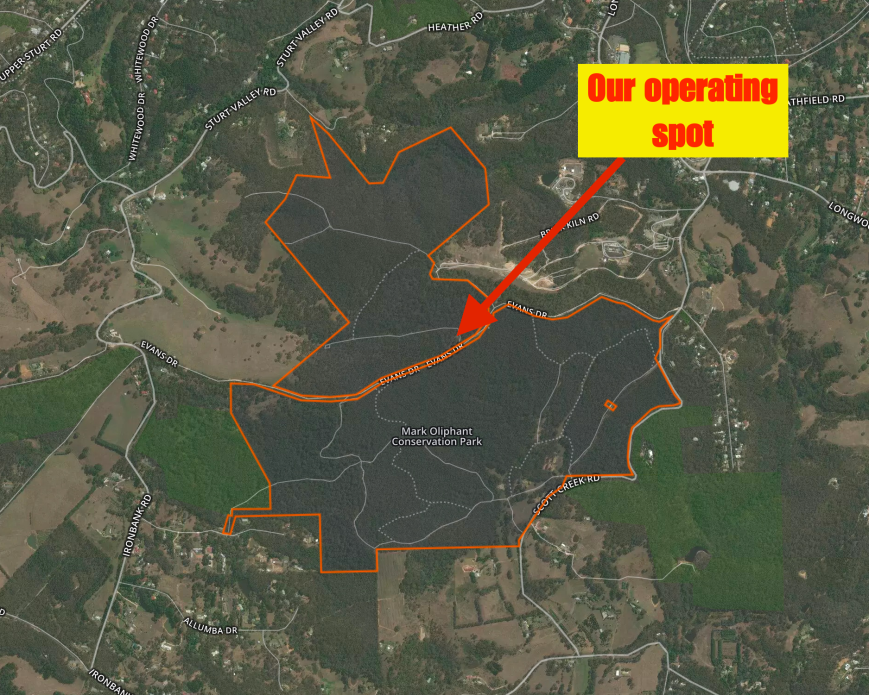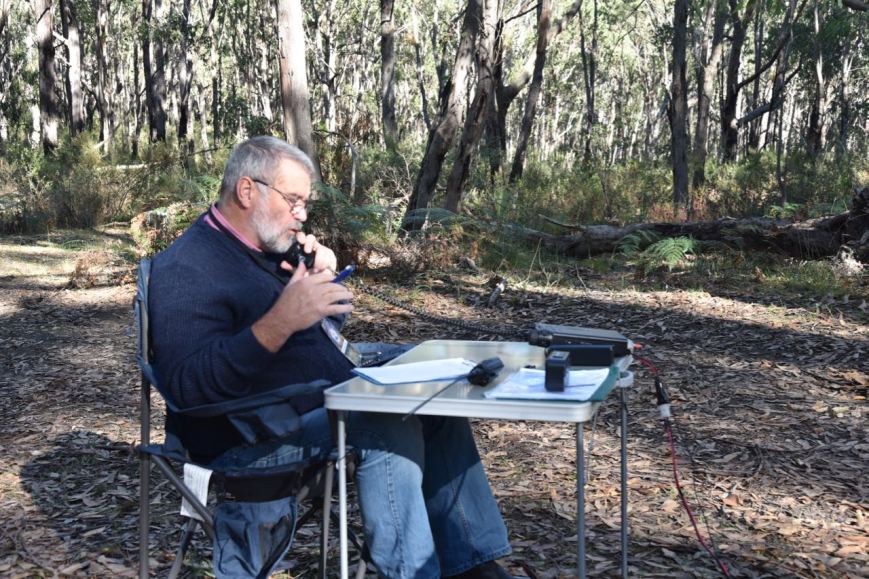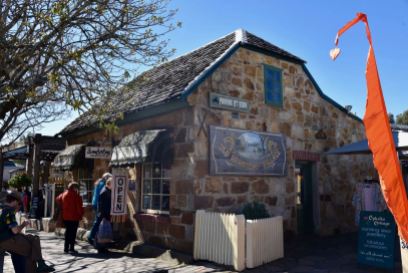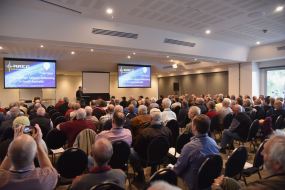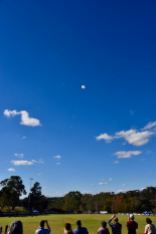An amazing weekend has come and gone…..the 2017 Wireless Institute of Australia (WIA) Annual General Meeting (AGM) and Convention in Hahndorf, South Australia. The theme for this year was….
‘Radio is Magic!’
Firstly I would like to congratulate the very hard working AGM/Convention Organising Committee, which comprised members from the various amateur radio clubs in Adelaide:
- Adelaide Hills Amateur Radio Society
- Amateur Radio Experimenters Group
- Elizabeth Amateur Radio Club
- North East Radio Club
- South Coast Amateur Radio Club
I was not part of the Committee, but was incorporated in their email group, and as a result I know of the tireless hours that the Committee put in behind the scenes to organise what was a sensational event. They can all take a bow and be very proud of what was achieved. They certainly made South Australia very proud.

Hahndorf is a small town situated in the Adelaide Hills, about 28 km south east of Adelaide. It is just a short 7 minute drive from my home. Hahndorf is classified as Australia’s oldest surviving German settlement, and each year, tens of thousands of tourists flock to Hahndorf’s main street which features historic hotel, restaurants & cafes, craft shops, lolly shops, smallgoods outlets, and bakeries.
For my wife Marija VK5FMAZ and I, the proceedings commenced late on Thursday afternoon, with Heath VK3TWO and his wife Monique VK6FMON arriving at our house. Heath and Monique had arranged to stay with us during their visit. Peter VK3PF was also scheduled to arrive, but was activating some parks along the way. Marija, Heath, Monique and I headed out for tea at the local Auchendarroch House and got back home around 8.30 p.m. Peter arrived soon after we got home and we all enjoyed a few nightcaps.
On Friday morning (19th May 2017) I headed off to work early, so that I could finish early. Upon completing work I headed down to the airport and collected Andrew VK6AS. We headed back to Hahndorf and caught up with David VK5KC and John VK5BJE for a coffee at the Three Gums Bistro. A group of us then headed down to the Hahndorf Inn in the Main Street of Hahndorf for a few traditional German beers.

Andrew VK6AS & Ian VK3BUF enjoying a German ale
A little later that evening we attended the Friday night festivities which were held at the Hahndorf Convention Centre. The evening was very well attended and featured all you can eat gourmet pizza. It was a fun evening and it was terrific to catch up with a number of familiar faces, and meet a few new people.
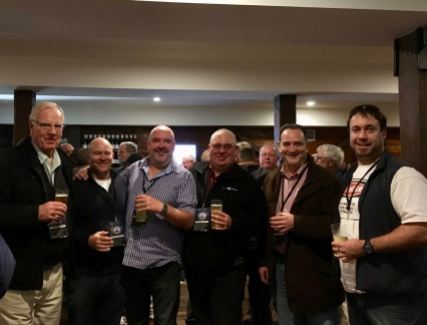
L-R: John VK5BJE, Chris VK5FR, Paul VK5PAS, Peter VK3PF, Steve VK5SFA, Heath VK3TWO

L-R: Chris VK5FR, Chris VK3WB, Monique VK6FMON, Andrew VK6AS, Heath VK3TWO, Paul VK5PAS & David VK5KC
On Saturday morning we all headed for the AGM, Forum, and presentations which were held at the Hahndorf Convention Centre. Forgetting the politics of the AGM, the day was a huge success. The new WIA Board were welcomed in, and I certainly wish them very well for the future.
Guest speakers in the afternoon were:
- David VK5KK and Iain VK5ZD…..Introducing Amateur Mircowaves
- David VK5DMC…..Getting into Digital Amateur Television
- Mark VK5QI…..High Altitude Balloon Tracking
- Steve VK5SFA…..Operating Low Band HF in confined spaces
- Paul VK5PAS…..Operating Field portable in the great outdoors
- David VK5DGR…..HF Digital Voice
- Joe VK3YSP & Julie VK3FOWL…..Promoting amateur radio & the SCARC program
- Grant VK5GR & Matt VK5ZM…..Promoting the Magic of Radio
During the day, Doc VK5BUG officialy launched his new book ‘Cellar Dwellars in the Go – operating 22200m, 630m, and 160m away from home’.
Whilst enjoying the Forum and talks at Hahndorf, many others chose the Partners Tour on the Saturday which featured two separate tours: a trip to the world famous Barossa Valley wine growing region, and a Mount Lofty Ranges tour.
All of the presenters were kindly given a certificate of appreciation, $50.00, and a nice bottle of red.

Later that evening we attended the Convention dinner which was held at the Hahndorf Convention Centre. The keynote speaker was Craig VK5CE who gave a very interesting presentation on his exploits in the Islands on the Air (IOTA) program. It was a thoroughly enjoyable and at times humorous presentation. Craig certainly opened a few eyes on how challenging operating from islands can be. Sue VK5AYL also spoke on her newly released Parks and Peaks App for iPhone which I have since used and it is great.

Craig VK5CE & IOTA

Sue VK5AYL and her new app

Heath VK3TWO, Monique VK6FMON, & Marija VK5FMAZ
On Sunday morning, with a slightly sore head from the night before, I headed back to Hahndorf where I met up with a keen group of amateurs who we had arranged to take out in the field. For many it was to be their very first park activation. There were five teams, headed by John VK5BJE, Chris VK5FR, Les VK5KLV, and Peter VK5PET, and myself. We each had about 3 participants in each team.
The following parks were activated:
- Scott Creek Conservation Park
- Mark Oliphant Conservation Park
- Mount George Conservation Park
- Kenneth Stirling Conservation Park
- Cleland Conservation Park
My three keen park activators were Stuart VK3STU, Al VK2OK, and Gerard VK2JNG. All 3 qualified the park for VKFF and appeared to have been bitten by the ‘portable bug’. I also gave VK5WOW a 20 minute run from the park.

Stuart VK3STU on the mic

Al VK2OK, with VK3STU & VK2JNG in the background

Gerard VK2JNG
Whilst some took up the opportunity of park activating on Sunday morning, others chose the trip to the National Motor museum at Birdwood. About 60 people attended the museum.
Just after midday I headed to the Hahndorf oval where the Come and Try amateur radio day was being held. With the help of Chris VK5FR, we set up a small display table on operating portable from a park. The display table included a number of transceivers, antennas, power sources, certificates, etc. Lots of questions were thrown at us from budding park activators.
Other displays and demonstrations at the oval included:-
- live microwave communications
- live ATV
- WICEN
- FreeDV digital HF voice operation
- Parks and Peaks i phone app
- HF transmitting magnetic loop antennas
- High altitude ballon tracking
- Radio direction finding
- HF digital modes
- D Star usage ad hotspot
- 640m band beacon
- IRLP usage
- LEO satellite tracking
- remote station operation

Dave VK5DMC explaining ATV

Steve VK5SFA at his mag loop display

David VK5KK
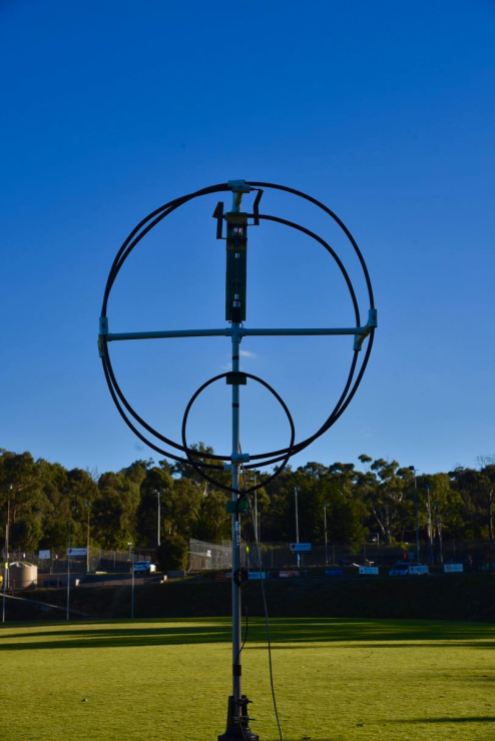
One of Steve VK5SFA’s mag loops

At the parks display table
The Amateur Radio Experimenters Group (AREG) launched a Project Horus high altitude balloon which contained a number of payloads, including 2m/70cm repeater. This was certainly one of the highlights of the afternoon.
Joe VK3YSP and Julie VK3FOWL also kept a large group of children from the local Hahndorf Primary School enthralled with a number of activities. It was great to see the kids having a lot of fun. Who knows, some of them may go on to becoming amateurs. Well done Joe and Julie.

Children from the Hahndorf Primary School. photo courtesy of Stuart VK5STU
Late in the afternoon I had a little bit of time to kill before the 6.00 p.m. BBQ tea at the oval. So I headed down to the Mylor Conservation Park and put VI5WOW on air for around an hour and logged a further 54 contacts from around Australia.
I then headed back to the Hahndorf Oval for the evening BBQ, which was the last hooray for the weekend. On Monday morning, I bidded farewell to Heath & Monique, and Peter, and headed to Hahndorf where I collected Andrew VK6AS and dropped him at the airport. It was the end of a truly MAGIC weekend. Again, thanks to all those involved.
Don’t forget that all contacts with VK5WOW and VI5WOW count towards the special 2017 WIA AGM/Convention Award, which can be applied for on-line via the WIA on-line awards system.































